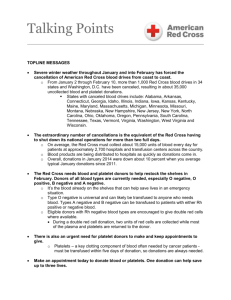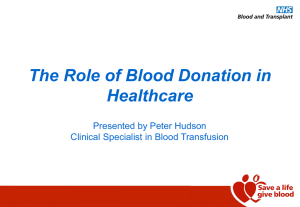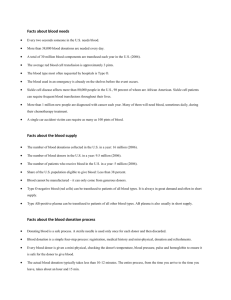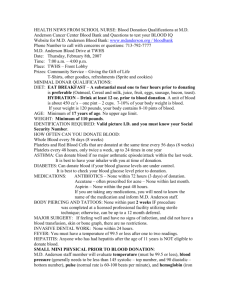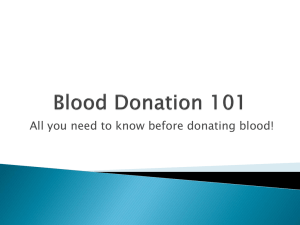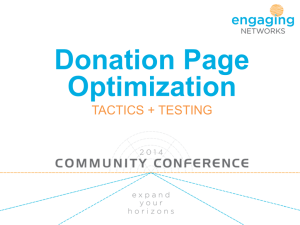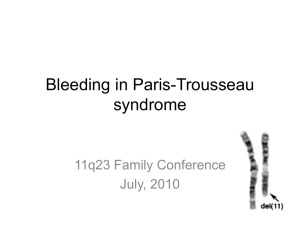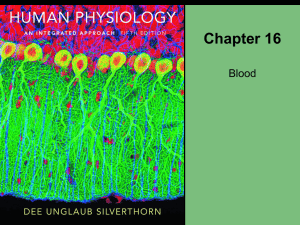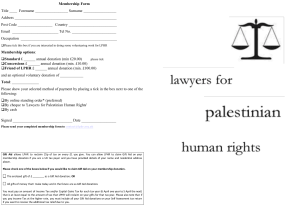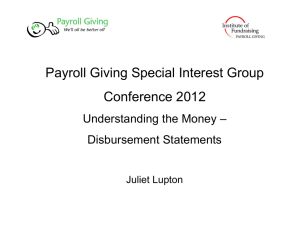Students Educate and Recruit the Community for Platelet, Blood
advertisement
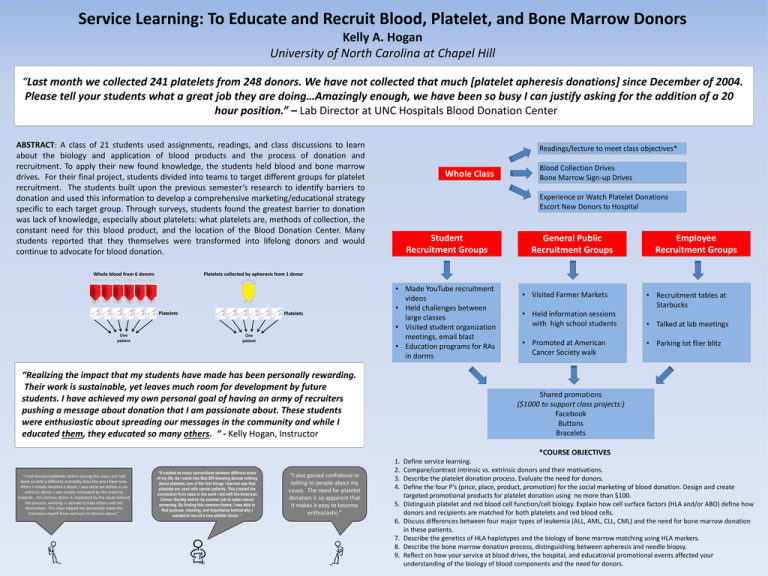
Service Learning: To Educate and Recruit Blood, Platelet, and Bone Marrow Donors Kelly A. Hogan University of North Carolina at Chapel Hill “Last month we collected 241 platelets from 248 donors. We have not collected that much [platelet apheresis donations] since December of 2004. “Last month we collected 241 platelets from 248 donors. We have not collected that much [platelet apheresis donations] since December of 2004. Please tell your students what a great job they are doing…Amazingly enough, we have been so busy I can justify asking for the addition of a 20 hour Please tell your students what a great job they are doing…Amazingly enough, we have been so busy I can justify asking for the addition of a 20 position.” –Lab Director at UNC Hospitals Blood Donation Center hour position.” – Lab Director at UNC Hospitals Blood Donation Center ABSTRACT: A class of 21 students used assignments, readings, and class discussions to learn about the biology and application of blood products and the process of donation and recruitment. To apply their new found knowledge, the students held blood and bone marrow drives. For their final project, students divided into teams to target different groups for platelet recruitment. The students built upon the previous semester’s research to identify barriers to donation and used this information to develop a comprehensive marketing/educational strategy specific to each target group. Through surveys, students found the greatest barrier to donation was lack of knowledge, especially about platelets: what platelets are, methods of collection, the constant need for this blood product, and the location of the Blood Donation Center. Many students reported that they themselves were transformed into lifelong donors and would continue to advocate for blood donation. Whole blood from 6 donors Whole Class Blood Collection Drives Bone Marrow Sign-up Drives Experience or Watch Platelet Donations Escort New Donors to Hospital Student Recruitment Groups General Public Recruitment Groups Employee Recruitment Groups Platelets collected by apheresis from 1 donor Platelets One patient Readings/lecture to meet class objectives* Platelets One patient • Made YouTube recruitment videos • Held challenges between large classes • Visited student organization meetings, email blast • Education programs for RAs in dorms “Realizing the impact that my students have made has been personally rewarding. “Realizing the impact that my students have made has been personally rewarding. Their work is sustainable, yet leaves much room for development by future students. Their work is sustainable, yet leaves much room for development by future I have achieved my own personal goal of having an army of recruiters pushing a students. I have achieved my own personal goal of having an army of recruiters message about donation that I am passionate about. These students were pushing a message about donation that I am passionate about. These students enthusiastic about spreading our messages in the community and while I educated were enthusiastic about spreading our messages in the community and while I them, they educated so many others. “ -Kelly Hogan, Instructor educated them, they educated so many others. “ - Kelly Hogan, Instructor • Visited Farmer Markets • Held information sessions with high school students • Promoted at American Cancer Society walk • Recruitment tables at Starbucks • Talked at lab meetings • Parking lot flier blitz Shared promotions ($1000 to support class projects:) Facebook Buttons Bracelets *COURSE OBJECTIVES “I had donated platelets before joining this class, but had done so with a different mentality than the one I have now. When I initially became a donor, I was what we define as an extrinsic donor. I was simply motivated by the material rewards …An intrinsic donor is motivated by the ideals behind the process, wanting to donate to help others and not themselves. This class helped me personally make the transition myself from extrinsic to intrinsic donor.” “It created so many connections between different areas of my life. As I came into Biol 294 knowing almost nothing about platelets, one of the first things I learned was that platelets are used with cancer patients. This created the connection from class to the work I did with the American Cancer Society and to my summer job in colon cancer screening. By finding this common theme, I was able to find purpose, meaning, and importance behind why I wanted to recruit a new platelet donor. “ “I also gained confidence in talking to people about my cause. The need for platelet donation is so apparent that it makes it easy to become enthusiastic.” 1. 2. 3. 4. 5. 6. 7. 8. 9. Define service learning. Compare/contrast intrinsic vs. extrinsic donors and their motivations. Describe the platelet donation process. Evaluate the need for donors. Define the four P’s (price, place, product, promotion) for the social marketing of blood donation. Design and create targeted promotional products for platelet donation using no more than $100. Distinguish platelet and red blood cell function/cell biology. Explain how cell surface factors (HLA and/or ABO) define how donors and recipients are matched for both platelets and red blood cells. Discuss differences between four major types of leukemia (ALL, AML, CLL, CML) and the need for bone marrow donation in these patients. Describe the genetics of HLA haplotypes and the biology of bone marrow matching using HLA markers. Describe the bone marrow donation process, distinguishing between apheresis and needle biopsy. Reflect on how your service at blood drives, the hospital, and educational promotional events affected your understanding of the biology of blood components and the need for donors.
